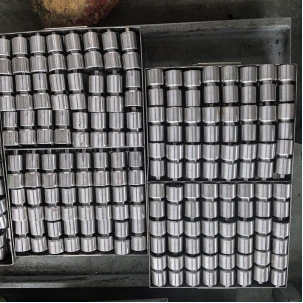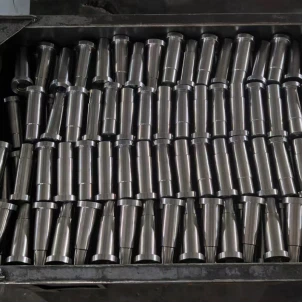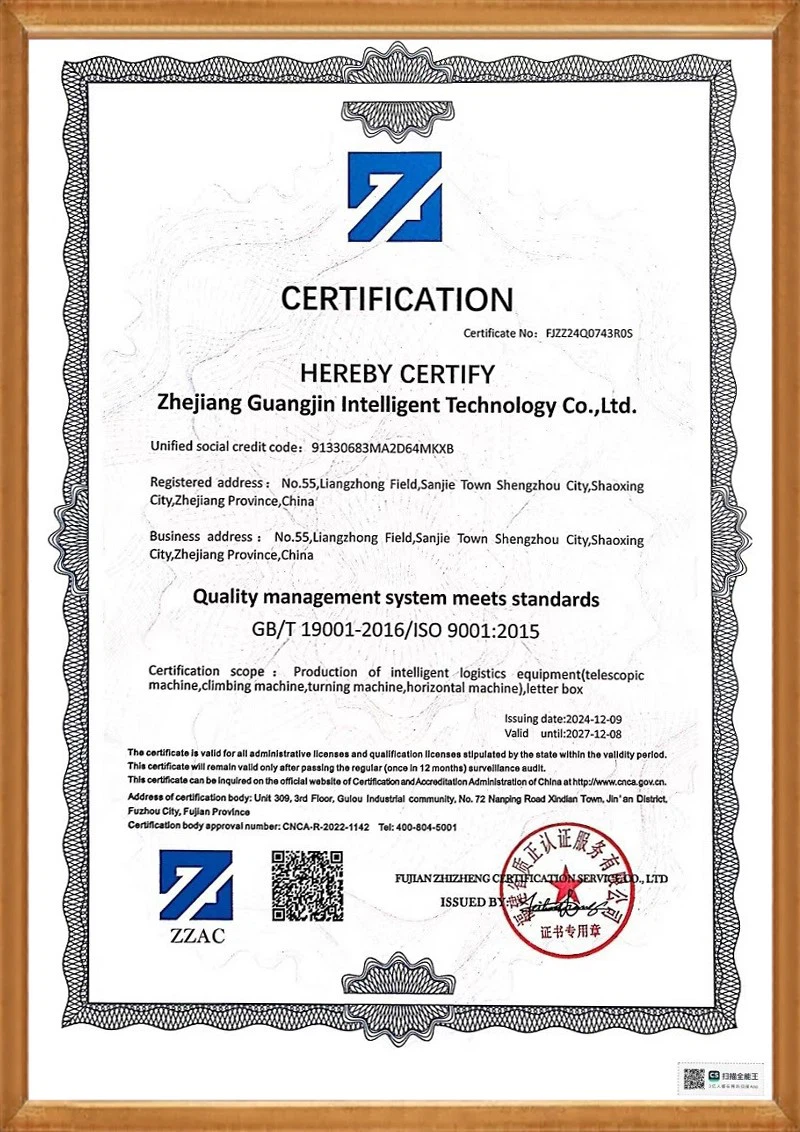Helical Teeth are key parts commonly used in mechanical transmissions, and their tooth lines are spiral. They have a large meshing overlap coefficient, smoother transmission, lower noise, and stronger load-bearing capacity, and can adapt to staggered shaft transmission scenarios. They are widely used in automobiles, machine tools, engineering machinery and other fields, and are important components for improving the efficiency and stability of transmission systems.
helical teeth Detail
| Product Name | helical teeth |
| Product Material | High-strength alloy structural steel (such as 20CrMnTi) is often used |
| Product Process | After rough machining by gear hobbing/shaping, finishing by gear shaving/grinding, and heat treatment, the mechanical properties are improved. |
| Surface Treatment | The surface hardness is often enhanced by carburizing, nitriding or high-frequency quenching, and partially supplemented by phosphating for rust prevention. |
| Customizable Products | Gears / Sprockets / Worms / Shafts / Rack Bars / Bevel Gears, etc. |

Product Advantages

Smooth transmission
The transmission process is more continuous and without obvious impact.

Strong load-bearing capacity
The tooth surface has good contact condition and can withstand greater loads.

Compact structure
Can be used for staggered shaft transmission, saving installation space.

Low noise
Small impact during meshing and lower noise during operation.

Product Information Parameters
In addition to standard sizes,GRANGIN also focuses on custom parts. It has an absolute advantage in the field of custom parts,
Meet almost all application requirements and the most stringent specifications.
| Model | Outer Diameter | Tooth Thickness | Total Thickness | Platform Roughness |
|---|---|---|---|---|
| 2 Module 18 Teeth | 42 | 24 | 40 | 30 |
| 2 Module 19 Teeth | 44 | 24 | 40 | 31 |
| 2 Module 20 Teeth | 46 | 24 | 40 | 33 |
| 2 Module 21 Teeth | 48 | 24 | 40 | 34 |
| 2 Module 22 Teeth | 50 | 24 | 40 | 36 |
| 2 Module 23 Teeth | 52 | 24 | 40 | 37 |
| 2 Module 24 Teeth | 55 | 24 | 40 | 40 |
| 2 Module 25 Teeth | 57 | 24 | 40 | 40 |
| 2 Module 26 Teeth | 59 | 24 | 40 | 42 |
Spur Gears Material
We can customize gears of different materials, sizes and styles.








20+ years of experience as helical teeth manufacturer
Specialized in designing, producing and processing various specifications of synchronous wheels, gears, sprockets, racks, couplings and other transmission accessories
Semi-finished Parts Pictures:

Custom 6-Mode Stainless Steel Gears

Custom Finished Hole Sprockets

Customized 1.2 Inch Large Sprocket

Custom Gear Shaft

Customized Electric Cylinder Coupling Shaft

Customized Aluminum Flange
Packaging Pictures:



Our Certificate

CE

ISO45001

ISO14001

ISO9001
Related popular products
What materials do you commonly use for helical gears? What working conditions are different materials suitable for?
The materials we commonly use include 45# steel, 20CrMnTi, 304 stainless steel, etc. 45 steel is suitable for general transmission scenarios and has a high cost performance; 20CrMnTi has strong wear resistance after carburizing and quenching, and is suitable for high-load transmission; 304 stainless steel is suitable for humid and corrosive environments.
What are the accuracy levels of helical gears? How to choose the appropriate accuracy according to the equipment?
Answer: The accuracy level is usually divided into 5-12 levels, and the smaller the number, the higher the accuracy. It is recommended to choose 5-7 levels for precision machine tools and servo systems; 8-10 levels for ordinary mechanical transmission; 11-12 levels for low-speed and heavy-load equipment.
How to determine the module and number of teeth of helical gears? Can non-standard parameters be customized?
The module and number of teeth need to be calculated and determined based on the transmission power, speed and transmission ratio. We support non-standard parameter customization. You need to provide specific transmission requirements, installation space and other parameters, and engineers will assist in optimizing the design.
What are the ways to treat the surface of the product? What role can it play?
Surface treatment includes blackening, galvanizing, chrome plating, carburizing and quenching. Blackening and galvanizing are mainly used for rust prevention; chrome plating can improve surface hardness and wear resistance; carburizing and quenching can enhance the strength of the tooth surface and extend the service life.
Hot Tags: helical teeth, China helical teeth manufacturers, suppliers, factory, bronze spur gears, Crossed Helical Gear, Double Helical Gear, Helical Cut, Helical Pinion Gear, Metric Helical Gears













